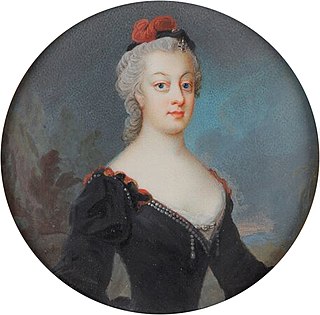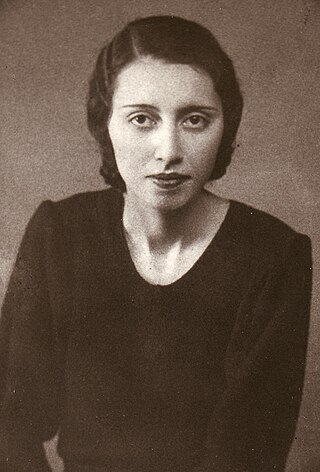Related Research Articles

Lucy Hobbs Taylor was an American dentist, known for being the first woman to graduate from dental school.

Carin Sophie Adlersparre, known under the pen-name Esselde was one of the pioneers of the 19th-century women's rights movement in Sweden. She was the founder and editor of the first women's magazine in Scandinavia, Home Review, in 1859–1885; co-founder of Friends of Handicraft in 1874–1887; founder of the Fredrika Bremer Association (Fredrika-Bremer-förbundet) in 1884; and one of the first two women to be a member of a state committee in Sweden in 1885.

Maria Lovisa Åhrberg or Årberg was a Swedish surgeon and doctor. She was lawfully practicing surgeon long before it became formally permitted for women to study medicine at a university in 1870. Lovisa Åhrberg could be regarded as the first female physician in Sweden with formal permit from the authorities to practice medicine: however, she had no formal training, and the first woman physician with a university degree was to be Karolina Widerström.

Lea Fredrika Ahlborn was a Swedish artist and medallist. She was a member of the Royal Swedish Academy of Arts and the first woman to be appointed royal printmaker. The position of royal printmaker was counted as a public office, and thereby made her the first female official or civil servant in Sweden.
Clara Aurora Liljenroth, also incorrectly referred to as Charlotta Liljeroth, was a Swedish scholar. She was one of few contemporary women to have attended and graduated from the gymnasium (1788) before they were officially opened to women, and attracted attention because of her unique position.

Sofia Adolfina Adlersparre was a Swedish painter from the Adlersparre family.

Countess Catherine Charlotte De la Gardie, also known as Catherine Charlotte de La Gardie, was a Swedish countess and courtier. She is famed for her support of the smallpox vaccination in Sweden, and for stopping the last witch trial in her country.
Rosalie Ingeborg Karolina Fougelberg is known as Sweden's first female dentist after the profession was opened to women.

Sofia Carolina Ahlbom was a Swedish drawing artist, engraver, lithographer, photographer, map maker, writer, poet and feminist.

Princess Amalia of Sweden was a Swedish princess, daughter of King Gustav IV Adolf of Sweden and Frederica of Baden.

There is a long history of women in dentistry. Women are depicted as assistant dentists in the Middle Ages. Prior to the 19th century, dentistry was largely not yet a clearly defined and regulated profession with formal educational requirements. Individual female dentists are known from the 18th century. When the profession was regulated in the 19th century, it took a while before women achieved the formal education and permission to engage in dentistry.

Johanna Maria Hedén, née Bowall was a Swedish midwife, Feldsher, apothecary, and barber. She is the first known licensed female feldsher in Sweden and as such the first known formally educated and trained female surgeon in Sweden.
Anna Ehrenström, née Gråberg, was a Swedish poet.

The status and rights of Women in Sweden has changed several times throughout the history of Sweden. These changes have been affected by the culture, religion and laws of Sweden, as well as social discourses like the strong feminist movement.
Ebba Maria De la Gardie (1657–1697) was a Swedish poet and singer.
Events from the year 1852 in Sweden
Barbara Suzanne Pauli was a Swedish fashion trader. She belonged to the most successful business entrepreneurs of Stockholm and described as the center figure of Stockholm fashion trade during the Gustavian age.
Joel Assur (1753–1837) was a Swedish dentist. He has been referred to as the "first dentist" in Sweden, in the modern sense of the word.
References
- Österberg, Carin et al., Svenska kvinnor: föregångare, nyskapare ['Swedish women: predecessors, successors')]. Lund: Signum 1990. ( ISBN 91-87896-03-6)
- Wilhelmina Stålberg: Anteckningar om svenska qvinnor ['Notes on Swedish women']
- Kjellander Barbro: På Amalia Assurs tid. Några anteckningar om och kring den första svenska kvinnliga tandläkaren ['The days of Amalia Assur. Some notes about and in connection to the first female dentist in Sweden']
- Folkets röst. 1852-11-03